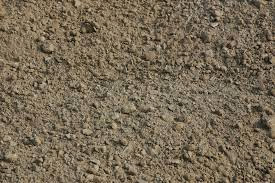Research Examines Limestone in Concrete
The initial age strength of high
volume fly ash concrete can be amazingly increased by the replacement of
limestone with a small amount of fly ash.
In a recent laboratory test, it is observed that a concrete mix with
50% cement replaced by the fly ash can perform well as compared to conventional
concrete while keeping the carbon savings and cost constant. The performance
level is increased by the replacement of 25% fly ash with limestone powder, by
volume, or with Type III Portland cement.
Dale Bentz, a chemical
engineer at the institute of National Institute of
Standards and Technology (NIST), says “A lot of the industry is using 15, 20,
even 25 percent fly ash in their mixtures, but this research demonstrates that
you can go beyond that and maybe replace 40 up to 60 percent of your cement
with fly ash and limestone.”
Research Methodology
The researchers initially
prepared nine mixtures: mixtures with 40% fly ash by Volume, Mixtures with 60%
fly ash by Volume and control concrete. The fly ash used for this project is of
two types i.e. ASTM Class C and ASTM Class F. A mixture with replacement of
limestone powder with 25% fly ash is also prepared.
Fly Ash
Fly ash is obtained as a
by-product during the combustion process. For commercial purpose, it is mostly
obtained from coal burning power plants. The properties of fly ash largely
depend on the properties of burning coal. If bituminous and anthracite coal is
burned, Class F fly ash forms, while Class C fly ash is obtained from the
burning of sub-bituminous coal or Lignite.
“These are two vastly different fly ashes in terms of their calcium oxide contents and also in terms of the way they behave in cementitious systems,” Bentz says. “The F ash is basically inert at early ages and the C ash produces extensive retardation. So it’s really a problematic ash to use.”
Results
After testing the samples, it
is observed that the conventional concrete had a strength of 2,870 psi at one
day, as compared 3,880 psi compressive strength, of the highest-strength
mixture of the research. Where as for 28 days strength, the C fly ash concrete
mixture gave strength of 8,840 psi as compared to conventional concrete having
value of 6,750 psi. The cost test was also against the conventional concrete.
The conventional concrete cost $53.61 per cubic yard where as the fly ash
concrete costs $48.41 per cubic yard.
Researchers Discussions
The limestone performs an important role in a concrete mixture, offering clear advantages and synergisms, Bentz notes. “A pert of the cement grains are dissolved, and form a solution, which can later give cement grains from a chemical process,” Bentz explains. “Some of them have increased in their size helping the pores to be filled. The purpose of limestone is to increase the area of precipitation.”
“Limestone Powder serves as a backbone, because basically
it is the increase of hydration process, from which we get both initial and
final strength of our material,” Bentz says. “The limestone increases the process
of hydration by increasing the surface area of precipitation as well as it
reacts with aluminates present in the fly ash or cement.”
Keywords: Cement, fly ash, limestone.

No comments:
Post a Comment